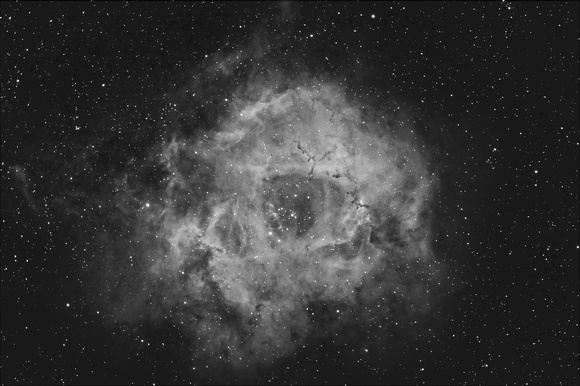Canon 350D Hap Griffin Baader Mod12x600sec at iso 1600
30 Darks/Flats/Bias
Orion ED80 with WO 0.8 reducer/flattenerBaader 7nm H alpha filter
Sky and Telescope Online Editor's Choice March 23, 2008Astrophotogallery.org Image of the Week 3-30-08My first narrowband image taken on the night of a full moon when I was incredulous that anything could be imaged at all.
The Rosette Nebula is a monstrous cloud of dust and gas, extending over an area of more than 1 degree across, or about 5 times the area covered by the full moon.
The complex has the following
NGC designations:
- NGC 2237 - Part of the nebulous region (Usually used to denote whole nebula)
- NGC 2238 - Part of the nebulous region
- NGC 2239 - Part of the nebulous region (Discovered by John Herschel)
- NGC 2244 - The open cluster within the nebula (Discovered by John Flamsteed in 1690)
- NGC 2246 - Part of the nebulous region
Within the nebula, open star cluster NGC 2244 is situated, consisted of the young stars which recently formed from the nebula's material, and the brightest of which make the nebula shine by exciting its atoms to emit radiation. Star formation is still in progress here.
The cluster and nebula lie at a distance of some 5,200 light years from
Earth (although estimates of the distance vary considerably) and measure roughly 130 light years in diameter. The
radiation from the young stars excite the
atoms in the nebula, causing them to emit radiation themselves producing the emission nebula we see. The
mass of the nebula is estimated to be around 10,000
solar masses.
March 20, 2008


